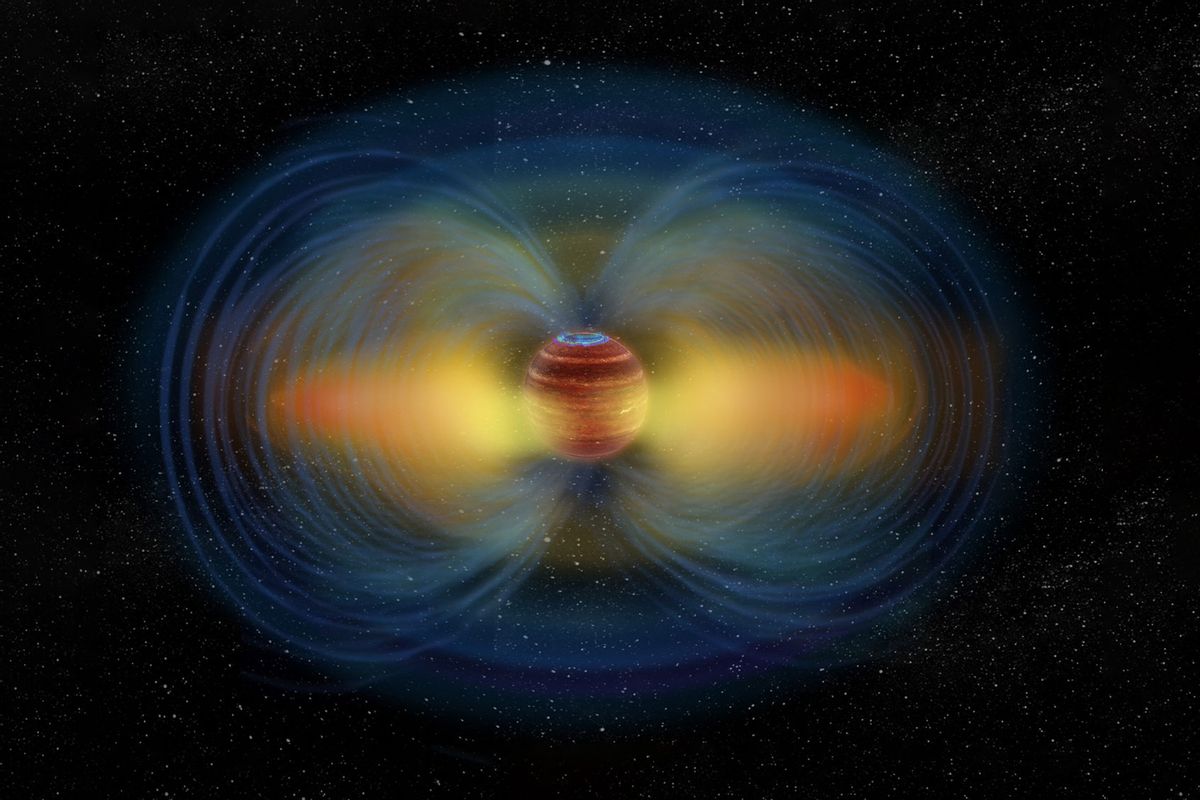Astronomers spot an aurora and a powerful radiation belt in another star system

Typically when we think of radiation, we might picture mutated monsters or the fate of poor Marie Curie, the pioneering scientist and two-time Nobel prize laureate who died from her research into the effects of ionizing radiation. But there is a delightful band of radiation that surrounds the Earth, created courtesy of Earth’s magnetic field, which repels some pretty nasty particles from space. Without it, life on this little planet would likely have a harder time surviving (indeed, some astrobiologists say life might not exist on Earth at all if not for the protective presence of our magnetic field).
Now, for the first time, scientists have detected such a radiation zone in another solar system. Other planets in our neighborhood, including Jupiter, Neptune and Uranus also have these donut-shaped radiation belts, which can stretch out farther than 10 times a planet’s radius. But this is the first time one has been spotted elsewhere in the universe. The research was published this week in the journal Nature.
To find this radiation band, astronomers employed an array of 39 radio dishes scattered across the globe, stretching from Hawaii to Germany, aiming it at the ultracool dwarf LSR J1835+3259. This object is about 18 lightyears away, located in Lyra, the minor constellation often depicted as a vulture carrying a lute.
“We are actually imaging the magnetosphere of our target by observing the radio-emitting plasma — its radiation belt — in the magnetosphere,” Melodie Kao, a postdoctoral fellow at the University of California, Santa Cruz and the study’s lead author said in a statement. “That has never been done before for something the size of a gas giant planet outside of our solar system.”
LSR J1835+3259 is called an ultracool dwarf because it is much colder than most stars and looks mostly brown, but it’s also tiny — just about the size of Jupiter. This star also has some pretty intense auroras, which on Earth are called the northern lights. These are the undulating chartreuse and magenta streamers of light that appear around the poles. They are generated by disturbances in the magnetosphere caused by the solar wind, which is an all-encompassing river of charged particles emitted by stars.
Auroras are good indicators of radiation belts, but they are hard to detect outside the solar system not only because of the extreme distance, but because the signal strength from this kind of energy is relatively faint. Additionally, low-level cosmic radiation can conceal some of this information as it travels to our telescopes.
But the radiation belts on LSR J1835+3259 are quite large and intense — about 10 million times brighter than those surrounding Jupiter, which is itself many times more powerful than the auroras on Earth. Our planet’s auroras may last a few hours on a good night, but on Jupiter, they never end.
Want more health and science stories in your inbox? Subscribe to Salon’s weekly newsletter The Vulgar Scientist.
“Auroras can be used to measure the strength of the magnetic field, but not the shape. We designed this experiment to showcase a method for assessing the shapes of magnetic fields on brown dwarfs and eventually exoplanets,” Kao said. “When we’re thinking about the habitability of exoplanets, the role of their magnetic fields in maintaining a stable environment is something to consider in addition to things like the atmosphere and climate.”
Which means that one day we could detect radiation belts on other planets, which would have interesting implications for any life that may exist there.
As mentioned, magnetic fields like Earth’s serve an important purpose. They swat away cosmic energy, including bursts of extremely high-energy particles that come from outside our solar system, which would eviscerate the DNA of most living creatures. Those particles are channeled into Earth’s radiation belt.
Mars used to have a radiation belt, but it disappeared over time as its magnetic field all but disappeared. The lack of this shield is one of many reasons it would be extremely difficult, if not impossible, for humans to live on Mars. If other objects in the universe do turn out to have radiation belts, it’s a good indicator that life can flourish there as well.
There are still many questions about the radiation belts on LSR J1835+3259, including their source. It could be due to volcanic activity on a yet-to-be-discovered planet or moon. After all, Jupiter’s magnetosphere is seeded by its moon Io, the most volcanically active body in our solar system, which is stripped of about 1 ton of material every second as it swings past the gas giant. In this way, Io contributes to Jupiter’s massive magnetosphere. Similar relationships could exist in other corners of the universe, which would tell us plenty about the possibility of life elsewhere in the cosmos.
Read more
about space

